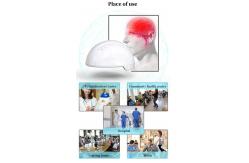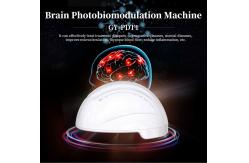256pcs LED 810 Nm Brain Photobiomodulation Machine For Cerebral Dementia Therapy
|
|
Photobiomodulation & Brain Health w/ Lew Lim of SSCH/Suyzeko
The Advanced Helmet Multi Frequency 0 - 20,000 Hz with Touchscreen Controller (Basic Helmet is 40 Hz only and manual controller)
Principle
810nm near-infrared light can penetrate the scalp and skull by about 1cm.Transcranial leds from the near infrared spectrum have been shown to provide anti-inflammatory and antioxidant effects.Heat shock proteins can also be added to prevent protein misfolding and unwanted synthesis;Has the potential to increase neuron regeneration and synaptic regeneration.
Cytochrome C oxidase (CCO, also known as complex IV) is a specific structure in mitochondria that ACTS as a photon receptor and thus plays the PBM effect.PBM prevents respiratory inhibition (and correspondingly reduces energy storage) in stress cells by isolating nitric oxide (NO) and reversing the shift of oxygen in cytochrome C oxidase.This triggers transcription factors that alter gene expression levels.The binding of nitric
oxide (NO) to copper (or heme) centers in the mitochondrial cytochrome C oxidase (CCO) inhibits cell respiration.But cytochrome C oxidase, which absorbs red or near-infrared (NIR) light, dissociates nitric oxide, restoring oxygen, increasing cellular respiration, and forming adenosine triphosphate (ATP).This triggers a cascade of intracellular reactions involving nitric oxide, reactive oxygen species (ROS), and cyclic adenosine phosphate (cAMP) that produce beneficial effects of PBM.
What is Brain Injury?
Brain Injury is the “multiple disabilities arising from damage to
the brain acquired after birth. It results in deterioration in
cognitive, physical, emotional or independent functioning. It can
be as a result of accidents, stroke, brain tumours, infection,
poisoning, lack of oxygen, degenerative neurological disease etc.”
Common Causes of Brain Injury
Accidents/Trauma
Degenerative Neurological Diseases
About Brain InjuryThe disability called brain injury – sometimes called acquired brain injury, or “ABI” – refers to any damage to the brain that occurs after birth. That damage can be caused by an accident or trauma, by a stroke, by a brain infection, by alcohol or other drug abuse or by diseases of the brain like Parkinson’s disease.
Brain injury is common. According to the Australian Bureau of Statistics, over 700,000 Australians have a brain injury, with daily “activity limitations” and “participation restrictions”. Three in every four of these people are aged 65 or under. As many as two out of every three acquired their brain injury before the age of 25. Three-quarters of people with a brain injury are men.
HOPE FOR DEMENTIA SUFFERERSio
Due to global aging, the number of people with dementia is expected to double every 20 years. People with dementia generally require high levels of care, most of which is provided by informal caregivers (i.e. family and friends). The Centers for Disease Control reports that over 16 million Americans provide unpaid care for people with Alzheimer’s or other dementias. These informal caregivers, and the loved ones whom they help, are at an increased risk of depression and a variety of other comorbid health complications.
“Even after many years of research, a drug has yet to be developed to benefit …neurodegenerative disorders (such as dementia, Alzheimer’s, and Parkinson’s).” The few drugs that are prescribed to help with dementia (cholinesterase inhibitors and memantine) work temporarily and can have significant side effects. However, there is growing evidence that supports the use of photobiomodulation as a treatment for dementia.
EVIDENCE OF PHOTOBIOMODULATION AS TREATMENT FOR DEMENTIA
In 2017, Photomedicine and Laser Surgery published a clinical trial
on the effects of photobiomodulation therapy (PBMT). Five trial
participants received PBMT daily for 12-weeks with a 4-week
follow-up period. Each participant had been previously diagnosed
with dementia or AD. The study used the Medical Mental State Exam
(MMSE) and the Alzheimer’s Disease Assessment Scale (ADAS-cog) to
measure the severity of each participant’s dementia at baseline and
after 12 weeks of daily PBMT.
MORE INFORMATION
WHAT IS DEMENTIA?
WHAT IS PHOTOBIOMODULATION?
Although many PBMT studies on cognition have been small, their results have been encouraging and warrant the future design of placebo-controlled trials. As the evidence supporting PBMT as a treatment option for dementia continues to grow, it is possible that PBMT for dementia “will become one the of the most important medical applications of light therapy in the coming years and decades.”
HOW DOES LIGHT THERAPY WORK?
It is well known that light helps skin cells produce vitamin D. This is possible because visible light penetrates biological tissues more than one might think. Interestingly, red and near infrared (NIR) light penetrate deeper than green, blue, or violet light. You can visualize this phenomenon by shining a white flashlight through your hand, observing a red glow on the other side (the blue and green wavelengths ‘disappeared’ because they were absorbe
CASE STUDIES One case study, presented at the Alzheimer’s Association International Conference in 2017, documented one AD patient’s response to PBMT. The participant was given a PBMT headset to take home and use 6 times per week for 17 weeks in conjunction with its intranasal device. Improved cognition and quality of life outcomes were noticeable in days, and continued to improve over the 17 weeks of treatment. By the second
day of PBMT, the patient reportedly “emerged from silence and started to hold meaningful conversations”. No negative side effects were observed. modulation, therapy machine, infrared light therapy, brain photobiomodulation 810nm, injury helmet therapy, light therapy / therapy machine / What is Photobiomodulation Therapy (PBMT)? Photobiomodulation Therapy (PBMT) is the best technical term for Low Level Laser Therapy (LLLT). It is a light therapy using lasers or LEDs to improve tissue repair, reduce pain and inflammation wherever the beam is applied. Usually applied by a doctor, therapist or technician, treatments take about 10 minutes and should be applied two or more times a week.
Photobiomodulation has been used for many years on sports injuries, arthritic joints, neuropathic pain syndromes, back and neck pain. Over 700 randomised clinical trials have been published on Photobiomodulation, half of which are on pain.
Brain Photobiomodulation Machine
The Brain Photobiomodulation Machine is a therapeutic instrument based on the principle of photobiomodulation. It has a good therapeutic effect on traumatic events (stroke, traumatic brain injury, and global ischemia), degenerative diseases (dementia, Alzheimer's and Parkinson's), and psychiatric disorders (depression, anxiety, post traumatic stress disorder)
What is Photobiomodulation?
Photobiomodulation (PBM) describes the use of red or near-infrared light to stimulate, heal, regenerate, and protect tissue that has either been injured, is degenerating, or else is at risk of dying. One of the organ systems of the human body that is most necessary to life, and whose optimum functioning is most worried about by humankind in general, is the brain. The brain suffers from many different disorders that can be
classified into three broad groupings: traumatic events (stroke, traumatic brain injury, and global ischemia), degenerative diseases (dementia, Alzheimer's and Parkinson's), and psychiatric disorders (depression, anxiety, post traumatic stress disorder). There is some evidence that all these seemingly diverse conditions can be beneficially affected by applying light to the head. There is even the possibility that PBM could be used
for cognitive enhancement in normal healthy people. In this transcranial PBM (tPBM) application, near-infrared (NIR) light is often applied to the forehead because of the better penetration (no hair, longer wavelength).
Main Function
Specifications
Indications 1. Traumatic events (stroke, traumatic brain injury, and global ischemia). 2. Degenerative diseases (dementia, Alzheimer's and Parkinson's). 3. Psychiatric disorders (depression, anxiety, post traumatic stress disorder).
Contraindication 1. Avoid direct exposure to the eyes, pregnant women's abdomen, melanoma, brown spots. 2. Taboo patients with early and middle stage malignant tumors. 3. Contraindications to patients with acute bleeding disorders.
|
||||||||||||||||||||||
| Product Tags: 256pcs LED Brain Photobiomodulation Machine 810 Nm Brain Photobiomodulation Machine Cerebral Dementia Therapy Photobiomodulation Helmet |
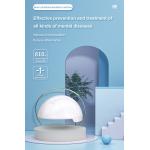
|
Brain Photo Biomodulation Therapy Machine |
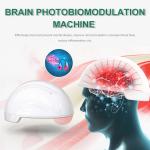
|
Suyzeko 810nm Light Therapy Helmet Parkinsons Disease Treatment |
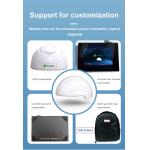
|
Red Light Helmet Treatment For Parkinson's Disease Symptoms 810nm Led Infrared Helmet |
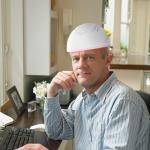
|
810nm Brain PhotoBiomodulation Therapy Machine White Or Black |
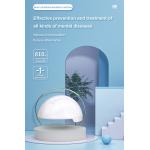
|
810nm Near Infrared Photobiomodulation Belt Brain Therapy Wrap Improve Memory |
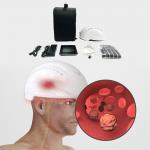
|
Brain Neuro Stimulator Depression Therapy Device PDT Treatment Anti Depression |

